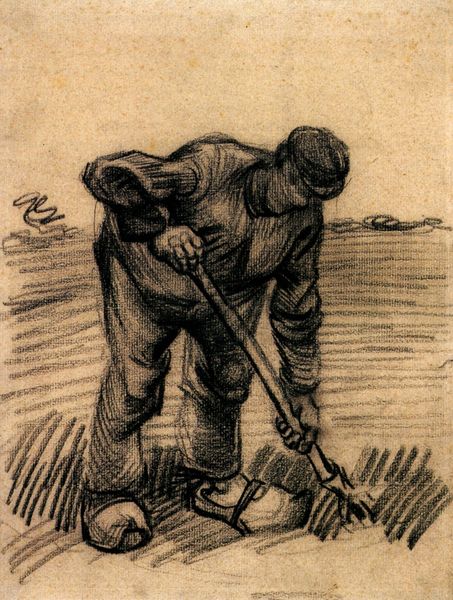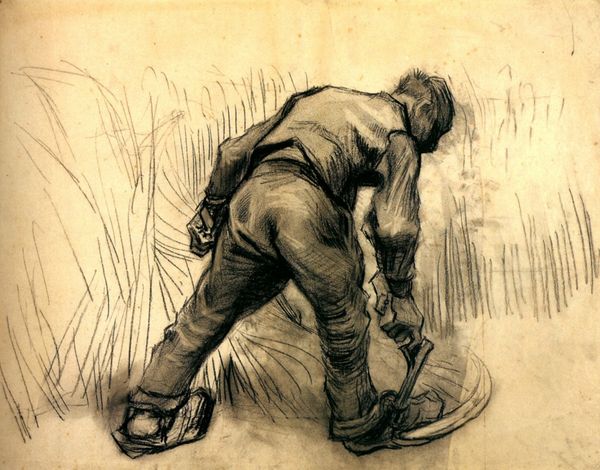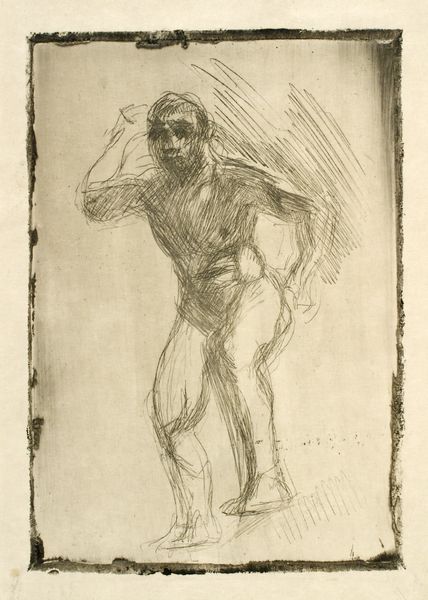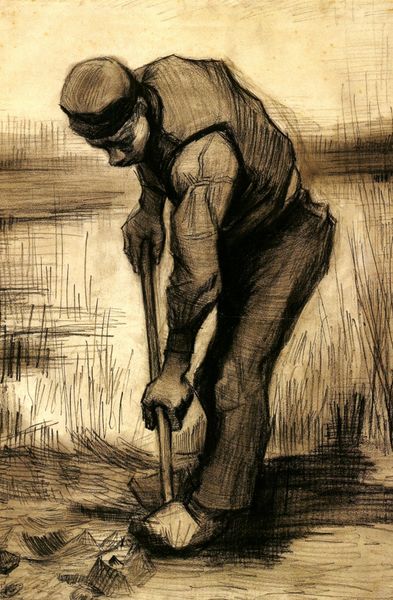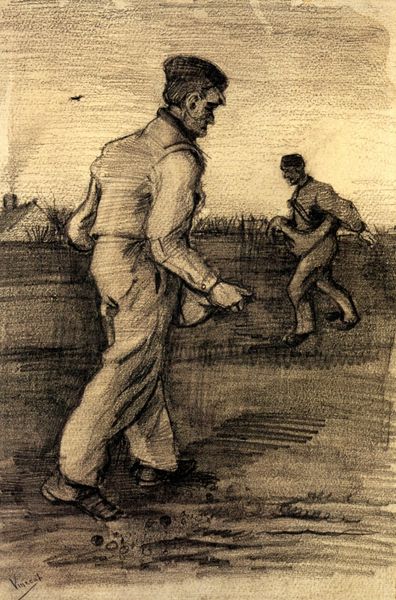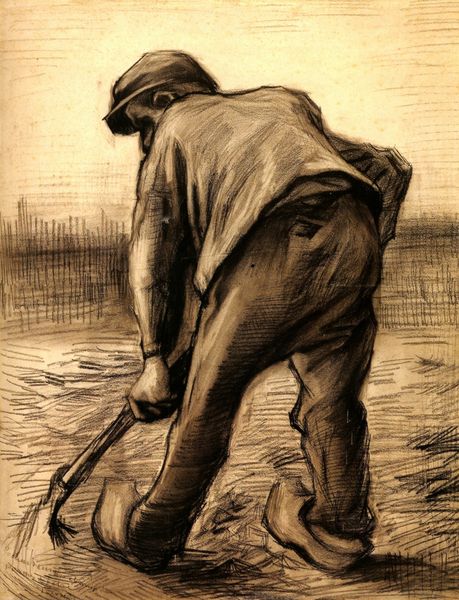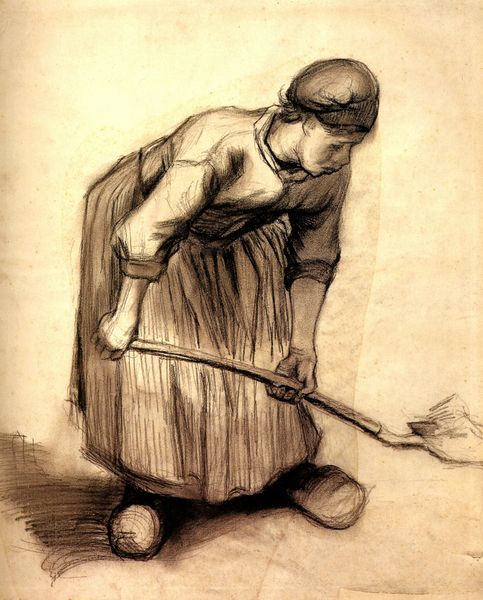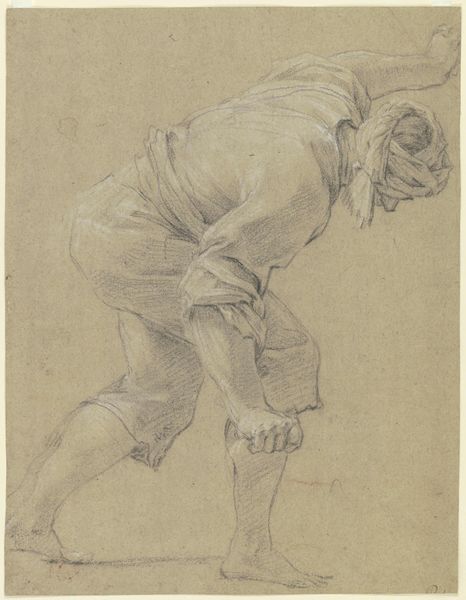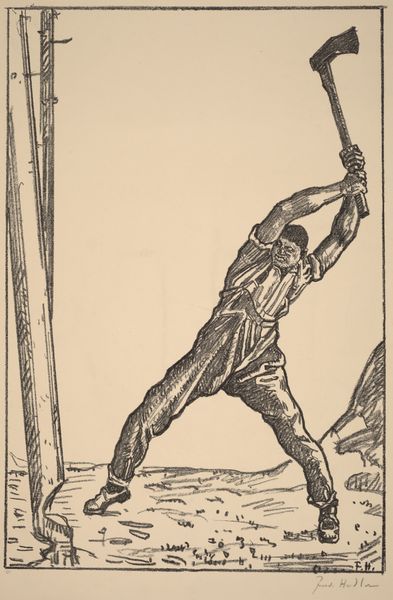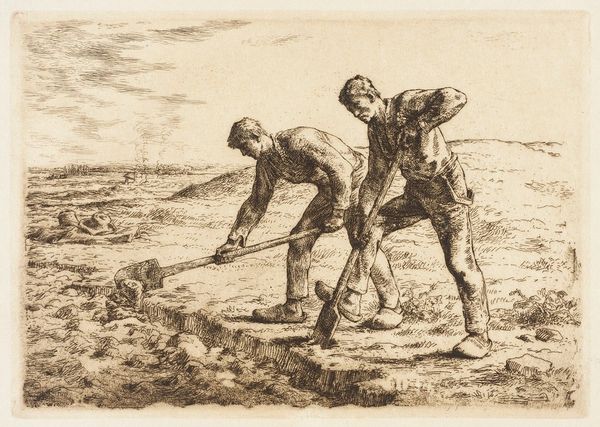
drawing, charcoal
#
portrait
#
drawing
#
charcoal drawing
#
form
#
line
#
charcoal
#
post-impressionism
#
charcoal
#
realism
Copyright: Public domain
Curator: Vincent van Gogh's 1883 charcoal drawing, "Man Breaking Up the Soil," greets us here today. It's housed at the Van Gogh Museum in Amsterdam. Editor: It hits me like a punch to the gut—all that heavy labor visualized through those swirling, urgent charcoal lines. The stark contrast just amplifies the exhaustion. Curator: Absolutely. The immediacy of charcoal really suits this subject, don't you think? The medium enhances the sense of the worker’s struggle, their raw physicality, through a limited tonal range and focus on the figure's contours. Van Gogh emphasizes line and form over precise details. Editor: It's visceral. You can practically feel the earth resisting the shovel. The poor fellow is bent double. Do you get a sense that Van Gogh is lionizing manual work and also portraying its brutalities? Curator: Without a doubt. This piece really captures that Post-Impressionistic turn towards Realism, the focus on the everyday experience of laborers—the common person. But the swirling style of Van Gogh’s strokes really makes the subject a more monumental, moving form, too. Editor: And there is almost this portrait-like sensibility to how it’s posed and rendered. It’s a person stripped down to just labor. Everything beyond his body in motion melts away to nearly nothing. It isn’t pretty but has a power. Curator: That’s where Van Gogh gets so good. He focuses on what connects with the body, almost an abstraction via a total commitment to a singular subject. A single guy in soil is both hyper specific but universal too. I feel an emotional connection. Editor: True. I think it succeeds because it doesn't shy away from showing us something fundamental about how much work actually shapes lives and landscapes. Thanks, Van Gogh, for this moment in soil and soul. Curator: Yes, the piece isn't simply representational; it embodies the very act it portrays. We are drawn in and somehow find beauty within a grueling occupation. A potent and evocative encounter, indeed.
Comments
No comments
Be the first to comment and join the conversation on the ultimate creative platform.
